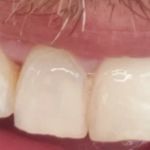Root Reconstruction: How It Restores Damaged Teeth and Improves Oral Health
- Understanding Root Reconstruction and Its Importance
- Common Causes of Tooth Root Damage
- The Root Reconstruction Process
- The Benefits of Root Reconstruction
- Aftercare and Maintenance for Root Reconstruction
Understanding Root Reconstruction and Its Importance
Root reconstruction is a dental procedure designed to restore the function and integrity of a tooth that has experienced root damage or decay. When the root of a tooth becomes compromised due to injury, infection, or advanced decay, it can affect the tooth’s ability to function properly. Root reconstruction helps in repairing and rebuilding the damaged area, ensuring the tooth remains viable for years.
This procedure is essential for saving teeth that would otherwise require extraction. It can significantly improve a patient’s ability to chew and speak, preserving both the tooth’s function and aesthetics. By focusing on repairing the root structure, root reconstruction offers a long-lasting solution for patients facing severe dental issues.
Common Causes of Tooth Root Damage
Tooth root damage can occur for a variety of reasons. One of the most common causes is tooth decay. When bacteria penetrate deep into the tooth, it can reach the root and cause an infection. Trauma or injury to the mouth, such as a fall or sports-related accident, can also result in root fractures.
Other factors contributing to root damage include improper dental care, where plaque buildup leads to advanced decay, and certain dental procedures that can inadvertently affect the tooth’s root. Gum disease can also contribute to root problems by weakening the tissue that supports the root, leading to its eventual damage.
The Root Reconstruction Process
The process of root reconstruction begins with a thorough examination by a dentist or oral surgeon. Diagnostic tools such as X-rays help determine the extent of the damage to the root and surrounding tissues. Based on the diagnosis, the appropriate treatment plan will be created.
In cases where the root is severely infected or damaged, a root canal procedure may be necessary to remove the infected tissue before reconstruction begins. The root canal involves cleaning out the damaged or decayed tissue from inside the tooth and sealing the root. Once the root is prepared, the reconstruction may involve adding materials to reinforce the structure, such as dental posts, and restoring the tooth with a crown or other prosthetic device.
The Benefits of Root Reconstruction
Root reconstruction offers numerous benefits for those with damaged or decayed teeth. First and foremost, it can save a tooth from extraction, allowing patients to maintain their natural teeth for as long as possible. This is important for preserving jawbone density, as missing teeth can lead to bone loss over time.
Additionally, root reconstruction improves the tooth’s functionality, restoring the ability to chew and speak comfortably. By repairing the root and reinforcing the tooth structure, the procedure also helps prevent further damage and the need for more invasive treatments down the line.
Root reconstruction can also have cosmetic benefits, especially when used to restore the appearance of a tooth that has been severely affected by decay or injury. Patients can regain their confidence, as the reconstructed tooth often looks and functions like a natural, healthy tooth.
Aftercare and Maintenance for Root Reconstruction
Proper aftercare is crucial for the success of root reconstruction. Following the procedure, patients may experience some discomfort, swelling, or sensitivity, which typically subsides within a few days. It’s important to follow the dentist’s instructions regarding pain management, and to avoid chewing on the reconstructed tooth until it has fully healed.
Maintaining good oral hygiene is essential to ensure the long-term success of root reconstruction. Brushing and flossing regularly, as well as visiting your dentist for routine checkups, will help prevent infections and other issues that could affect the reconstructed tooth. Your dentist may also recommend specific care products designed to support the healing process and maintain optimal oral health.
If you're dealing with damaged or decayed teeth, root reconstruction could be the solution you need to restore both function and aesthetics. Speak with a dental professional to see if this procedure is right for you. For more information and access to top-quality dental care products, visit Dentistry Toothtruth, where you can find the latest treatments and solutions for maintaining a healthy smile.







 Maui Whitening Orlando4.0 (32 review)
Maui Whitening Orlando4.0 (32 review) Bloomington Southside Dental Care3.0 (26 review)
Bloomington Southside Dental Care3.0 (26 review) Christiana Dental Center4.0 (650 review)
Christiana Dental Center4.0 (650 review) Carolina Dental Arts - New Bern Ave4.0 (152 review)
Carolina Dental Arts - New Bern Ave4.0 (152 review) Equitas Health Short North Medical Center3.0 (96 review)
Equitas Health Short North Medical Center3.0 (96 review) Prosthodontics of Madison - Kendra Schaefer, DMD & Christine Roenitz, DMD4.0 (25 review)
Prosthodontics of Madison - Kendra Schaefer, DMD & Christine Roenitz, DMD4.0 (25 review) The Importance of Oral Health Education During Pregnancy for a Healthy Pregnancy
The Importance of Oral Health Education During Pregnancy for a Healthy Pregnancy Best Tips for Brushing Your Teeth Properly for Healthy Gums: Essential Techniques for Oral Health
Best Tips for Brushing Your Teeth Properly for Healthy Gums: Essential Techniques for Oral Health Why Skipping Dental Checkups Can Lead to Bigger Oral Health Problems
Why Skipping Dental Checkups Can Lead to Bigger Oral Health Problems Advantages of Porcelain Dental Restorations
Advantages of Porcelain Dental Restorations How Can Diabetes Cause Tooth and Gum Problems? Preventing and Managing Oral Health Issues
How Can Diabetes Cause Tooth and Gum Problems? Preventing and Managing Oral Health Issues Healthy Habits for Promoting Good Oral Health and Hygiene: Tips for a Healthy Smile
Healthy Habits for Promoting Good Oral Health and Hygiene: Tips for a Healthy Smile